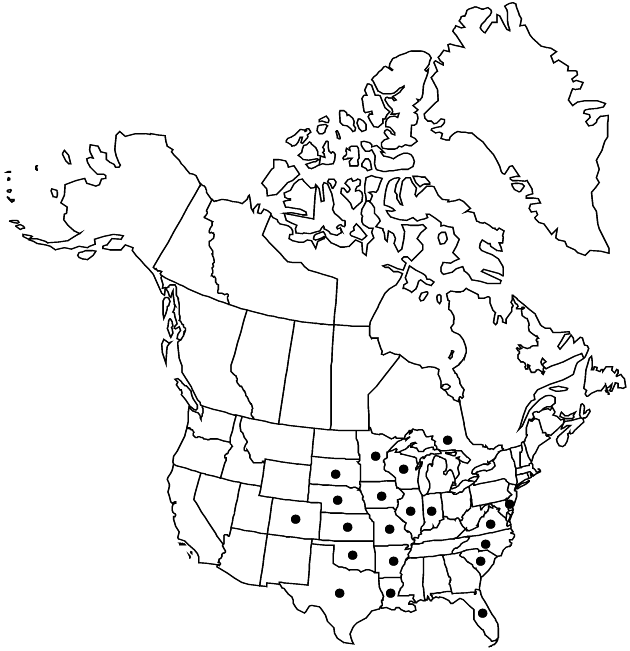Euthamia gymnospermoides
Pittonia 5: 75. 1902.
Perennials or subshrubs, 40–150 cm. Stems (simple or branched) glabrous or with scabrous lines, not glaucous. Leaves usually ascending; blades (1–) 3-nerved or -5-nerved, linear to lanceolate, 40–100 (–120) × 1.4–4 (–8) mm, lengths 12–49 time widths, gradually reduced distally, firm-herbaceous, margins scabrous, apices acuminate, faces abundantly and prominently gland-dotted (29–49 dots per mm²), glabrous or midveins with hairs. Heads (some or all) pedunculate (rarely all glomerate), usually in flat-topped to slightly rounded, arrays (25–) 35–60% of plant heights. Involucres obconic, (4–) 4.5–6.2 mm. Phyllaries usually green-tipped, outer ovate, inner linear-oblong, apices obtuse to acute (± strongly resinous). Ray-florets 9–13 (–16). Disc-florets 3–9; corollas (3–) 3.3–4.8 mm. 2n = 36, 54.
Phenology: Flowering Aug–Sep.
Habitat: Open, dry to moist, sandy areas
Elevation: 0–200 m
Distribution

Ont., Ark., Colo., Del., Fla., Ill., Ind., Iowa, Kans., La., Minn., Mo., Nebr., N.C., Okla., S.C., S.Dak., Tex., Va., Wis.
Discussion
Some plants from the southern Great Lakes area with tendencies to shorter involucres and narrower leaves, called Euthamia gymnospermoides by H. A. Gleason and A. Cronquist (1991) and D. J. Sieren (1981), are better included in E. caroliniana.
Selected References
None.
Lower Taxa
"[" is not declared as a valid unit of measurement for this property."]" is not declared as a valid unit of measurement for this property.